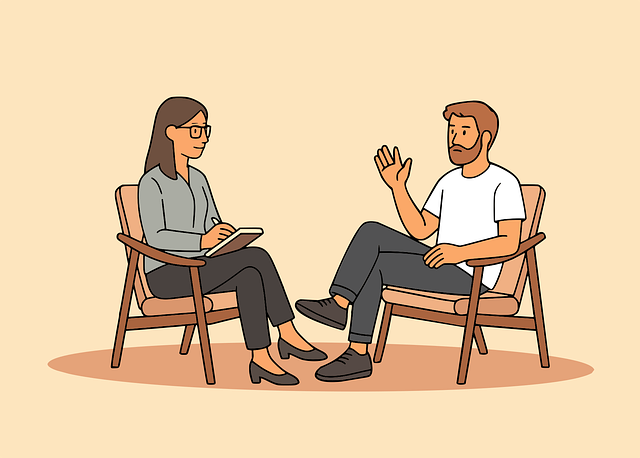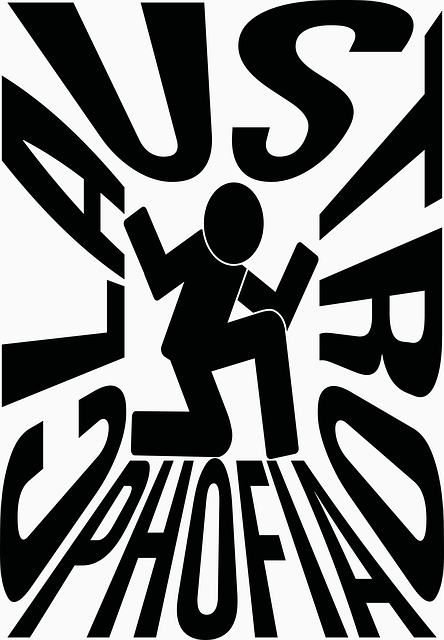CBT therapy is a powerful, structured psychological treatment that tackles negative thought patterns contributing to mental health issues like depression, anxiety, and PTSD. By challenging these distorted thoughts and replacing them with realistic alternatives, individuals gain self-awareness, healthier coping mechanisms, and improved overall well-being. Techniques such as challenge thinking and behavioral activation help reframe perspectives and improve mood through engaging in enjoyable activities. CBT has proven success treating various conditions, encouraging active patient participation for long-lasting benefits, even after therapy concludes. Integrating CBT techniques into daily life is crucial for maintaining progress.
“Uncover the power of your thoughts with CBT therapy, a proven approach to transforming mental health. This article guides you through the intricacies of Cognitive Behavioral Therapy (CBT), offering a comprehensive understanding of its core principles and techniques. From identifying negative thought patterns to addressing cognitive distortions, we explore how CBT empowers individuals to take control. Discover the diverse benefits, learn effective strategies, and find tips for integrating CBT into daily life, all aimed at enhancing well-being.”
Understanding CBT Therapy: A Brief Overview

CBT therapy, or Cognitive Behavioral Therapy, is a highly effective form of psychological treatment that focuses on identifying and changing negative thought patterns and behaviors. It’s a structured approach that empowers individuals to take control of their mental health by understanding the connection between thoughts, feelings, and actions.
This therapeutic method encourages clients to challenge and reframe distorted thinking, replacing unhelpful cognitive processes with more realistic and adaptive ones. By doing so, CBT helps individuals manage symptoms associated with various mental health disorders such as depression, anxiety, and post-traumatic stress disorder (PTSD). Through this process, folks can gain valuable insights, develop healthier coping strategies, and ultimately enhance their overall well-being.
Identifying Negative Thought Patterns

Negative thought patterns can often go unnoticed, ingrained in our daily cognitive processes. CBT (Cognitive Behavioral Therapy) provides a structured framework to identify and challenge these unhelpful thoughts. By bringing awareness to our internal dialogue, individuals can begin to recognize recurring negative themes. These might include all-or-nothing thinking, catastrophizing, or jumping to conclusions, often fueled by emotions like fear, anger, or sadness.
Through self-reflection and with the guidance of a therapist, one can start to unpick these patterns. This process involves questioning the validity and helpfulness of such thoughts, learning to replace them with more balanced alternatives. CBT encourages individuals to challenge their cognitive distortions, fostering a healthier and more adaptive thought process over time.
The Role of Cognitive Distortions in Mental Health

Cognitive distortions play a significant role in mental health, often leading to various emotional and behavioral issues if left unaddressed. These are patterns of thinking that are distorted or irrational and contribute to negative feelings and behaviors. They can manifest as all-or-nothing thinking, catastrophizing, jumping to conclusions, and personalizing events. CBT therapy, a widely recognized evidence-based approach, focuses on identifying and challenging these cognitive distortions.
By bringing awareness to these thought patterns, individuals can begin to question their validity and replace them with more balanced and realistic thoughts. This process empowers people to develop healthier coping mechanisms, improve mood, and enhance overall well-being. CBT has proven effective in treating numerous conditions, including depression, anxiety disorders, and post-traumatic stress disorder, by addressing the underlying cognitive factors that contribute to these mental health challenges.
Techniques Used in CBT to Change Thoughts

Cognitive Behavioral Therapy (CBT) employs a range of powerful techniques to help individuals identify and modify unhelpful thought patterns. One key method is challenge thinking, where clients learn to question and reframe negative or distorted thoughts. This involves examining the evidence for and against such beliefs, helping people see things from different perspectives. For instance, if someone thinks, “I always fail,” CBT encourages them to consider successful outcomes in their past and present, balancing the perspective.
Another effective technique is behavioral activation. It motivates individuals to engage in activities they enjoy or find meaningful, which can improve mood and challenge negative thought cycles. By scheduling enjoyable activities and gradually facing fears, clients can experience a more positive and balanced mindset over time. These CBT strategies empower individuals to take control of their thoughts and emotions, fostering a healthier relationship with themselves and their perceptions.
Benefits and Effectiveness of CBT for Various Disorders

Cognitive Behavioral Therapy (CBT) has established itself as a highly effective approach for treating a wide range of mental health disorders. Its core principle revolves around identifying and modifying negative or distorted thought patterns, which in turn influences emotions and behaviors. This therapy is particularly beneficial for individuals dealing with anxiety, depression, post-traumatic stress disorder (PTSD), eating disorders, and substance abuse issues.
The effectiveness of CBT lies in its structured and goal-oriented nature. It empowers patients to become active participants in their journey towards recovery by teaching them practical coping strategies. Through this process, individuals gain a deeper understanding of their thoughts and emotions, enabling them to challenge and replace unhelpful cognitive distortions with more realistic and adaptive ones. As a result, CBT offers long-lasting benefits, even after the therapy sessions have ended, making it a preferred choice for many mental health professionals and clients alike.
Integrating CBT into Daily Life and Maintaining Progress

Integrating Cognitive Behavioral Therapy (CBT) into daily life is a crucial step in maintaining progress after sessions with a therapist. CBT encourages individuals to identify and challenge negative or distorted thought patterns, replacing them with more realistic and positive ones. By practicing this in everyday situations, one can reinforce new ways of thinking and behaving. Simple techniques such as keeping a thoughts journal, where you record negative thoughts and reframing them rationally, can be highly effective. This process allows individuals to become more aware of their thought processes and catch any unhelpful patterns early on.
Additionally, establishing a consistent self-care routine supports the longevity of CBT’s benefits. Regular exercise, sufficient sleep, and a balanced diet contribute to improved mental health and emotional well-being. Engaging in activities that promote relaxation, such as meditation or deep breathing exercises, can also help individuals manage stress and anxiety, making it easier to implement CBT techniques into their daily lives. Consistent effort and commitment to these practices are key to sustaining progress and enhancing overall mental resilience.
